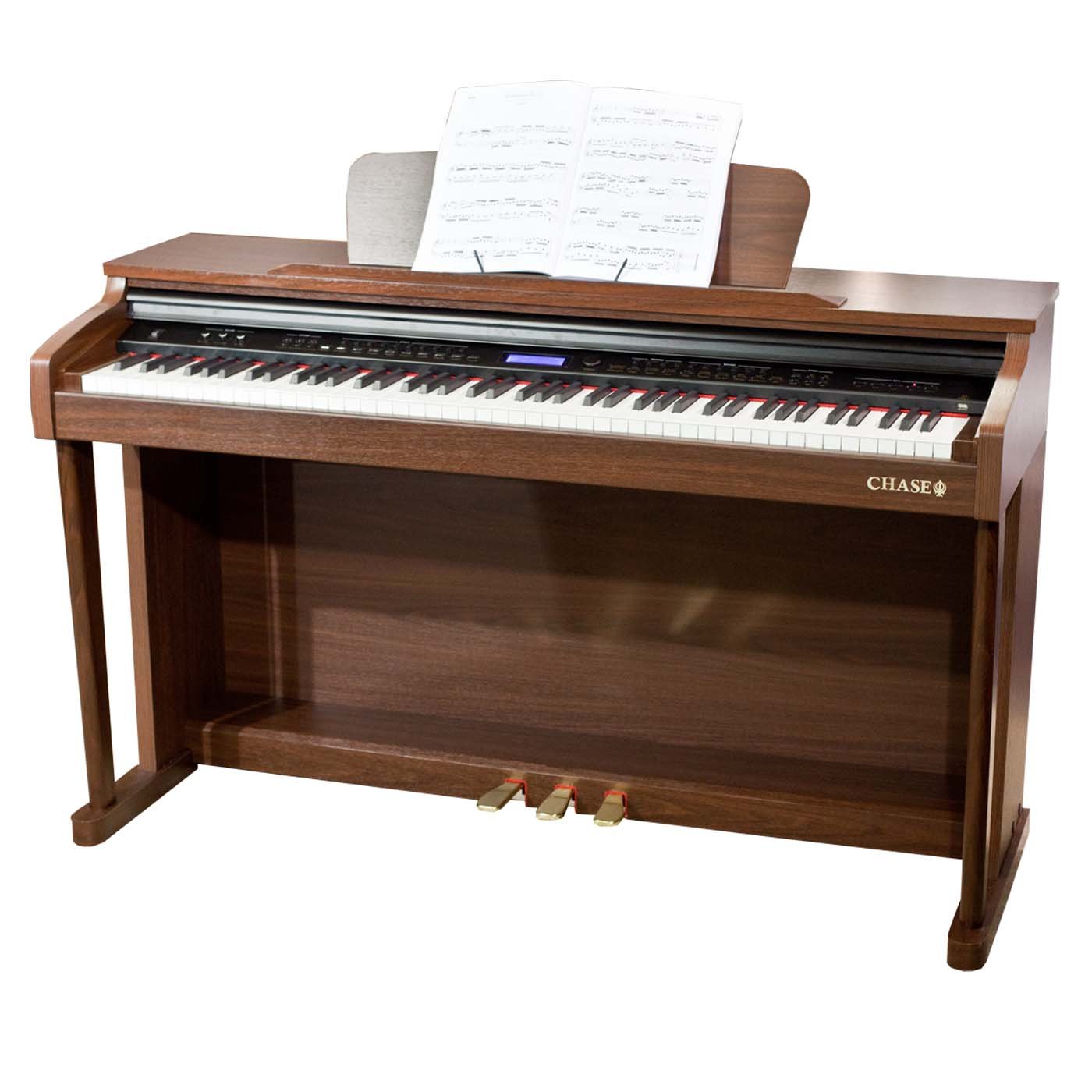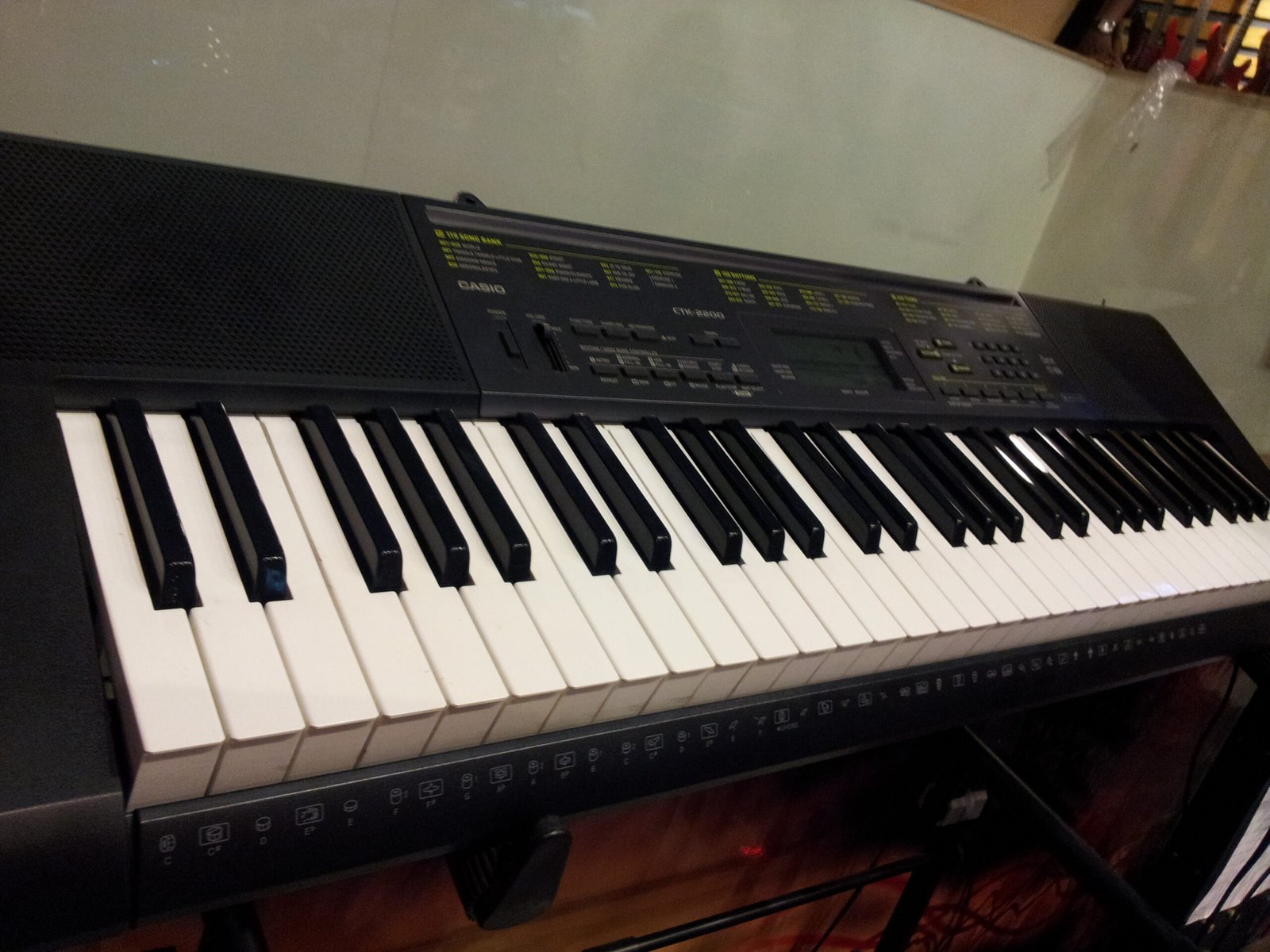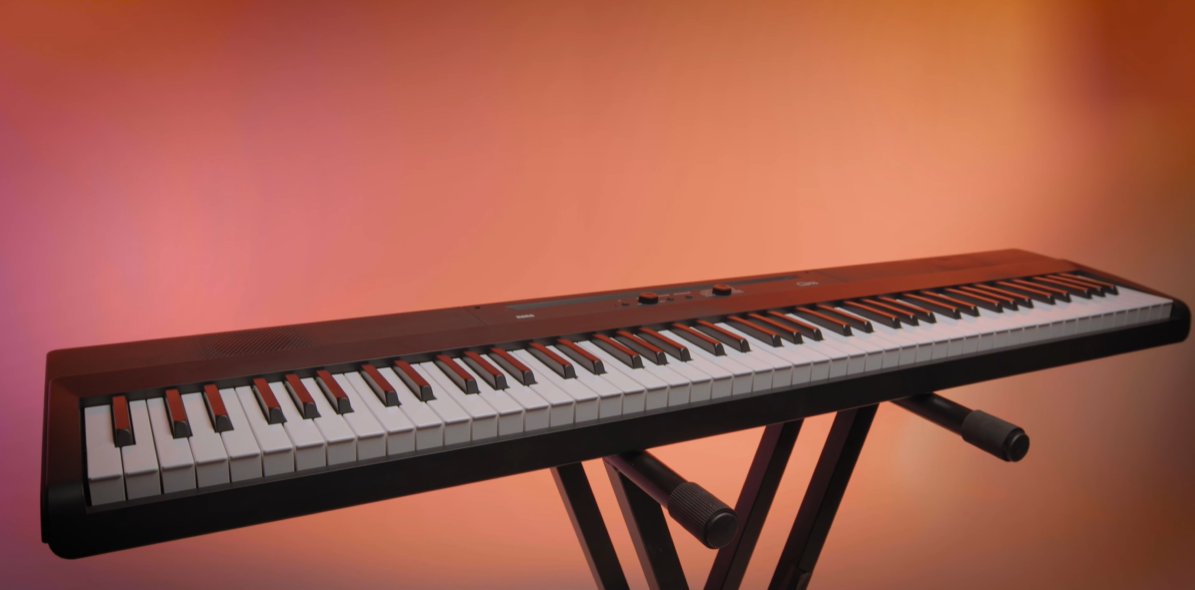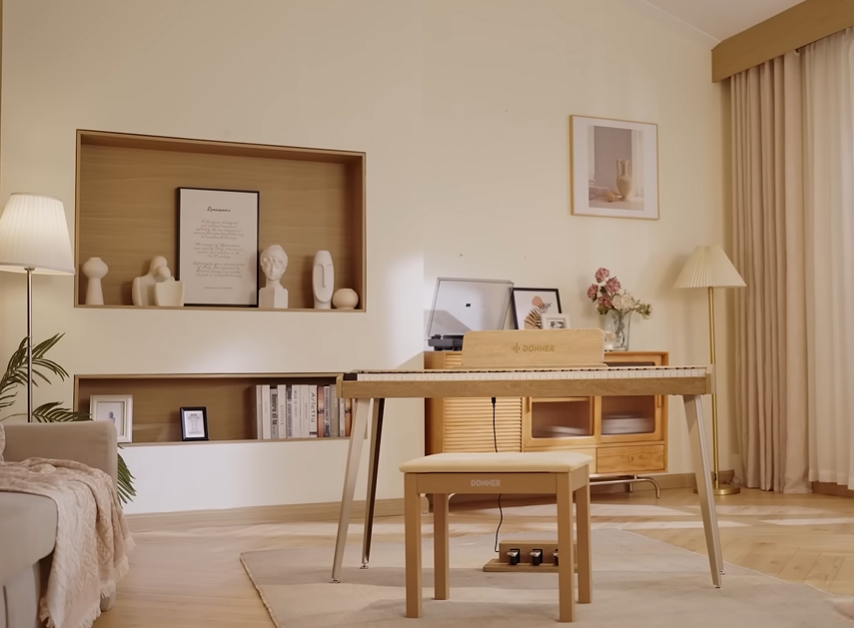Table of Contents
ToggleDigital Piano vs Keyboard: Which One Is Right for You?
Many beginners ask the same big question: Should I buy a digital piano or an electronic keyboard? It’s a common debate in the music world. The short answer? It depends on you. Both can be great, but in different ways. The best choice depends on who you are, what you need, and how you want to play.
But that answer leads to even more questions, right?
So let’s go back to the beginning. In this guide, I’ll clear up the confusion, explain the main differences, and answer some common questions. Whether you’re buying for yourself or your child, you’ll learn what to look for—and how to pick the right instrument for your music journey.
What’s in a Name? Understanding Keyboard Instruments
It’s easy to get confused by the many names for keyboard instruments. Even the names themselves cause a lot of questions!
Before we dive in, I want to clear up some confusion and simplify things. In this article, I’ll focus on three main types of keyboards: digital pianos, portable digital pianos, and electronic keyboards. I’ll explain what each one means, so it’s easy to understand.
To make things clearer, let’s remove a few terms that often cause mix-ups:
Stage piano: This is a keyboard with 73 or 88 keys that feel like a real piano (weighted keys). It doesn’t have built-in speakers, so you need to connect it to an amplifier or speakers. It usually has extra features for live performances.
Electric piano: This is a special kind of piano that uses electric parts to make sound when hammers hit metal parts inside. Famous examples are the Fender Rhodes and Yamaha CP-70. These are mostly vintage or older instruments.
Portable keyboard: Since all electronic keyboards are easy to carry, the word “portable” isn’t needed. So, we won’t use this term to keep things simple.
Now, with these terms out of the way, we can focus on the keyboards you’ll hear about most: digital pianos, portable digital pianos, and electronic keyboard.
What Is a Digital Piano?
A digital piano is a type of keyboard that copies the sound, feel, and look of a real, acoustic piano. It’s made to give you the experience of playing a traditional piano but with some modern features.

Sounds and Voices
Digital pianos focus mainly on creating high-quality grand piano sounds. While they might include other sounds like electric pianos, organs, or strings, the main star is always the grand piano tone. Most digital pianos come with about 10 different sound options, but the best ones concentrate on making the piano sound as real as possible.
Built-in Speakers
Unlike stage pianos, which need extra speakers or amplifiers, a digital piano usually has built-in speakers. This means you can play and hear the music right away, without plugging in extra equipment.
Keys and Feel
Most digital pianos have 88 keys, just like an acoustic piano. Sometimes, you might find smaller versions with 73 keys, but those are less common. The keys usually have a hammer action, which means they feel heavier and respond like real piano keys. Some budget models might have lighter, semi-weighted keys, but these don’t feel as close to a real piano.
Many digital pianos also have special keys that feel like ebony and ivory, which gives a more natural touch and grip when you play.
Looks and Design
When people say “digital piano,” they usually mean a keyboard built into a wooden cabinet or stand that looks like a traditional piano. This can be similar to an upright piano or even a small grand piano.
These digital pianos often come with features like:
A music stand to hold your sheet music
A key cover or lid to protect the keys
A set of three pedals, just like a real piano
If you want something easier to move around, a portable digital piano has all the sounds and keys but without the big wooden cabinet. It’s lighter and smaller, making it simple to carry.
For a nicer look, you can also buy a wooden stand with pedals to give your portable piano a more classic style — almost like an upright piano but without the heavy size.
What Is an Electronic Keyboard?
An electronic keyboard is a lightweight, easy-to-carry musical instrument. It’s perfect for beginners of all ages because it often includes fun and helpful features to make learning simple.
Key Features of Electronic Keyboards
Portable: You can take it anywhere because it’s light and easy to carry.
Affordable: Electronic keyboards usually cost less, making them great for first-time players.
Versatile: They come with many sounds and styles, so you can try different music types.
Fun: Built-in songs and rhythms keep practice interesting and exciting.
How Many Keys Does an Electronic Keyboard Have?
Most electronic keyboards have between 25 and 61 keys. The most common size is 61 keys, which is a good number for beginners who want to eventually play on a full-size piano.
What Are the Keys Like?
The keys on electronic keyboards are usually lighter to press than those on real pianos. They can be velocity-sensitive (meaning they respond to how hard you press) or semi-weighted, but they don’t feel exactly like a traditional piano.
Extra Features
Built-in Speakers: So you don’t need extra equipment to hear the sound.
Battery Power: You can play without plugging in, which makes it easy to play outside or on the go.
Lots of Sounds: Many keyboards come with hundreds of sounds—from pianos to drums to electronic effects—so you can have fun experimenting.
Practice Tools: Most keyboards include demo songs, rhythms, and lessons to help you learn. Sometimes lessons come through apps you can connect to the keyboard.

Who Should Buy an Electronic Keyboard?
Because they are easy to use and affordable, electronic keyboards are perfect for kids, beginners, and anyone trying music for the first time. They’re a great way to see if you enjoy playing before spending more money on a bigger instrument.
What’s the Difference Between a Digital Piano and an Electronic Keyboard?
The biggest difference is in what each one is made for. A digital piano is made to feel and sound like a real piano. It tries to be as close as possible to a real acoustic piano. On the other hand, an electronic keyboard is made for fun, easy use, and lots of features. It’s usually cheaper, lighter, and easier to carry around.
Digital pianos usually have fewer sounds, but the sounds are much better and more realistic. They also have heavier keys that feel more like a real piano when you play.
Most of the time, a digital piano is big and meant to stay in one place, like in your living room. An electronic keyboard is small and light, so you can take it anywhere—to school, a friend’s house, or even on a trip!
| 🎹 Digital Pianos | 🎼 Keyboards |
|---|---|
| ✔️ Look and feel like a real piano | 💲 Generally cheaper |
| ✔️ Hammer-action keys for expressive, dynamic playing | 🚀 Portable — lightweight & battery-powered |
| ✔️ Excellent for preparing students for acoustic pianos | 🎶 Wide variety of sounds, rhythms, and accompaniments (versatile) |
| ✔️ Premium piano sounds | 🎓 Fun and educational features like light-up keys and lessons |
| ✔️ Visual aesthetic adds to experience | 🎹 Lighter keys, ideal for some beginners, especially kids |
| ✔️ Beautiful design that fits any room |
| What’s Not to Like? | Digital Pianos | Keyboards |
|---|---|---|
| 💰 Cost | Typically more expensive | Usually more affordable |
| 🎒 Portability | Generally heavier and less portable | Lightweight and easy to carry |
| 🎛️ Versatility | Primarily designed for piano sounds only | Highly versatile with many sounds, which can distract beginners |
| 🎹 Sound & Feel | Offers realistic piano sound and weighted keys | Sound and feel are less authentic and less expressive |
| 🎼 Expression & Dynamics | Allows nuanced playing with dynamic control | Limited ability to express dynamics due to unweighted keys |
Digital Piano vs Keyboard: A Clear and Simple Comparison
To help you choose the right instrument, I will compare digital pianos and keyboards in the most important ways. This will make it easy for you to understand which one fits you best.
Sound Quality and How Real It Feels
The Yamaha Piaggero NP-15 is one of my favorite electronic keyboards because it has a really nice grand piano sound.
But if I compare it to a beginner-friendly digital piano, like the Alesis Recital Pro, I still prefer the digital piano.
Even though the Yamaha uses a better piano sound sample, the keys are lighter and don’t feel like a real piano. Because of this, digital pianos usually sound more real and authentic than lighter keyboards like the NP-15.
Keyboard Feel and Action
A digital piano with hammer-action keys feels more like a real piano. If you can, it’s best to learn on keys that are fully weighted because they help you get used to playing for real.
But some players, especially kids, find weighted keys hard to press. It’s better to practice well on lighter keys than to get stuck and frustrated with heavy ones.
If weighted keys feel too hard for you, try an electronic keyboard with semi-weighted or velocity-sensitive keys first. These keys are easier to press but still respond to how hard you play.
The most important thing is to try both kinds of keyboards before you buy. That way, you can find the one that feels best for you.
Portability, Size, and Weight
Digital pianos that look like big upright or grand pianos are usually heavy and stay in one place, just like a real piano. These types are great if you want something that sounds nice and looks beautiful at home.
If you want a piano that feels more like a real one but is easier to move, a portable digital piano is a good choice. It’s a middle ground between a big piano and a small keyboard.
But keep in mind, portable digital pianos are still much heavier than regular electronic keyboards. They aren’t something small kids can carry around easily.
Also, digital pianos usually have 88 keys, which is the full piano size. I think it’s best for students to learn with all 88 keys, but if the piano feels too heavy or hard to move, you might want to think about a smaller keyboard with fewer keys—like a 61-key electronic keyboard.
If your main goal is to have a lightweight instrument that you can carry around the house or even take outside, then an electronic keyboard is the best choice.
Features and Functions
Usually, electronic keyboards have more features and special functions than a regular digital piano.
Digital pianos have fewer features because their main goal is to feel and sound like a real piano.
One important feature that many digital pianos have, but some electronic keyboards don’t, is a built-in recorder. I always tell students to record themselves playing. Listening to their own music helps them get better.
Electronic keyboards often come with lots of fun features like:
Light-up keys that show you which notes to play
Play-along songs to practice with
Lots of different sounds, rhythms, and accompaniments
Special buttons for Intro, Fill, and Ending rhythms
Drum kits and other cool sounds
These features make playing electronic keyboards very exciting!
But there is a small problem: some younger kids might get too distracted by all the fun features. Instead of practicing, they might just play for fun.
So, I always suggest parents or family members pick an instrument that fits the child’s personality and style best. This helps the child enjoy learning and practicing more.
Connectivity Options
When it comes to plugging in these instruments, it’s usually pretty simple. Most beginners don’t need many connection features.
A digital piano usually has:
MIDI through USB — This lets you connect to a computer or music apps.
A 1/4-inch audio output — To connect to speakers or amplifiers.
At least one headphone jack — So you can play quietly.
A plug for a three-pedal unit — For sustain and other pedals.
An electronic keyboard usually has fewer connections. It often includes:
MIDI through USB
A headphone jack
A plug for a sustain pedal
These are the most common ports, but sometimes there are exceptions.
If you’re taking piano lessons, it’s nice if your digital piano has two headphone jacks. That way, both you and your teacher can listen quietly without disturbing others.
More expensive digital pianos may have extra audio inputs and outputs. This is useful if you want to perform live on stage or record your music.
For electronic keyboards, the most important thing is to have a sustain pedal input. Some keyboards don’t have this and use a sustain button instead, but using a pedal is important to learn the right piano technique.
Cost
Electronic keyboards are usually much cheaper than digital pianos. Prices can be anywhere from less than $100 to a few hundred dollars.
For example:
The Yamaha NP-15 (a 61-key electronic keyboard) costs about $270.
The Yamaha YDP-105 (an entry-level digital piano) costs about $1100.
If money is tight, this might help you decide. But remember, digital pianos give better value for your money because they feel and sound more like a real piano.
If you want to learn piano seriously and can afford it, a digital piano is the better choice. It has heavier keys that feel just like a real piano.
But if you’re not sure you’ll stick with it, or if you need something light and easy to carry, then a cheaper electronic keyboard might be a good place to start. You can always upgrade later.
For Beginners
Here’s what I suggest, ignoring price for a moment:
Digital piano: Best for beginners of any age who don’t need to move the instrument around.
Portable digital piano: Great for teens or adults who want a real piano feel but don’t have room for a big piano.
Electronic keyboard: Perfect for younger beginners who want something light, easy to carry, and fun.
For Stage and Performance
Electronic keyboards are not really designed for stage performances. You can perform with them using audio outputs or headphones, but they’re not made for that.
There are special keyboards called arranger keyboards that are better for live shows, but these are different from beginner keyboards.
Digital pianos are also not great for taking on stage because they are big and heavy.
If you want an instrument to practice on and bring to shows, choose a portable digital piano.
For Traveling and On the Go
If you want to practice or play while traveling, electronic keyboards win here. They are light, often run on batteries, and have built-in speakers.
Some portable digital pianos can also run on batteries, but they’re heavier and harder to carry.
For Home Use
All types—digital pianos, portable digital pianos, and keyboards—work well at home. It depends on what you want.
The best home setup is a digital piano with a nice upright cabinet, or even a grand piano if you have the money. These look beautiful and sound great, making your home feel special.
Frequently Asked Questions
Can I learn piano on a keyboard?
Yes! You can learn on a keyboard, though it may not feel or sound exactly like a piano. For some beginners, lighter keys can be easier to press.
Are digital pianos expensive?
Some are, but you can find entry-level digital pianos starting around a few hundred dollars, and upright models from about $700.
Do keyboards have learning tools?
Many keyboards come with built-in learning features, but not all of them.
Can I use a sustain pedal with a keyboard?
Yes! It’s important to have a sustain pedal to practice proper pedaling.
Can keyboards sound like other instruments?
Yes! Both keyboards and digital pianos can mimic sounds like organs, strings, or bells. Keyboards usually have more instrument sounds built-in.
How long do these instruments last?
If you take good care of them, they can last many years. Keyboards might get damaged easier because kids sometimes use them roughly.
Are digital pianos more durable than keyboards?
Yes, usually. Digital pianos often have solid wooden stands and feel sturdier. Portable digital pianos feel tougher too. Keyboards are lighter and less sturdy.
Final Thoughts
I hope this helps clear up some common questions about digital pianos and keyboards.
There is no “better” instrument—only the one that fits you best.
Use this guide to pick the instrument that helps you learn well and enjoy playing the most!


